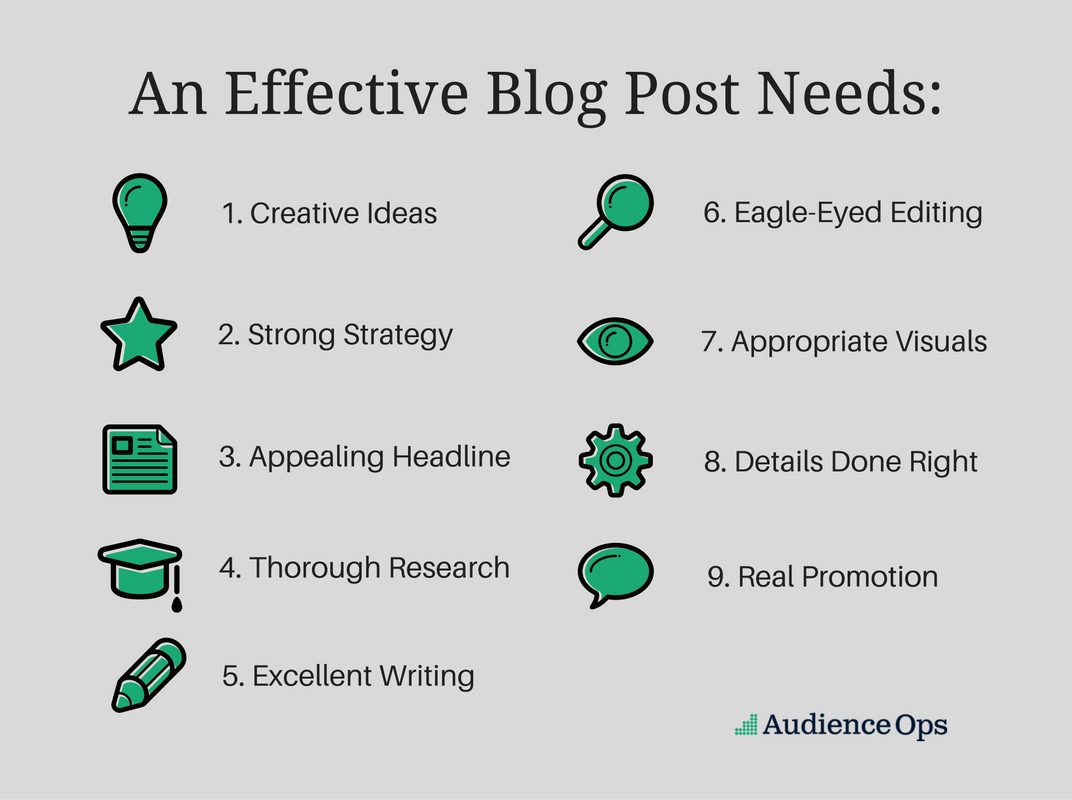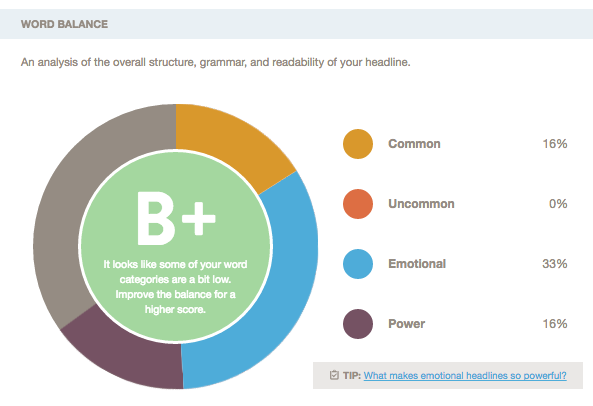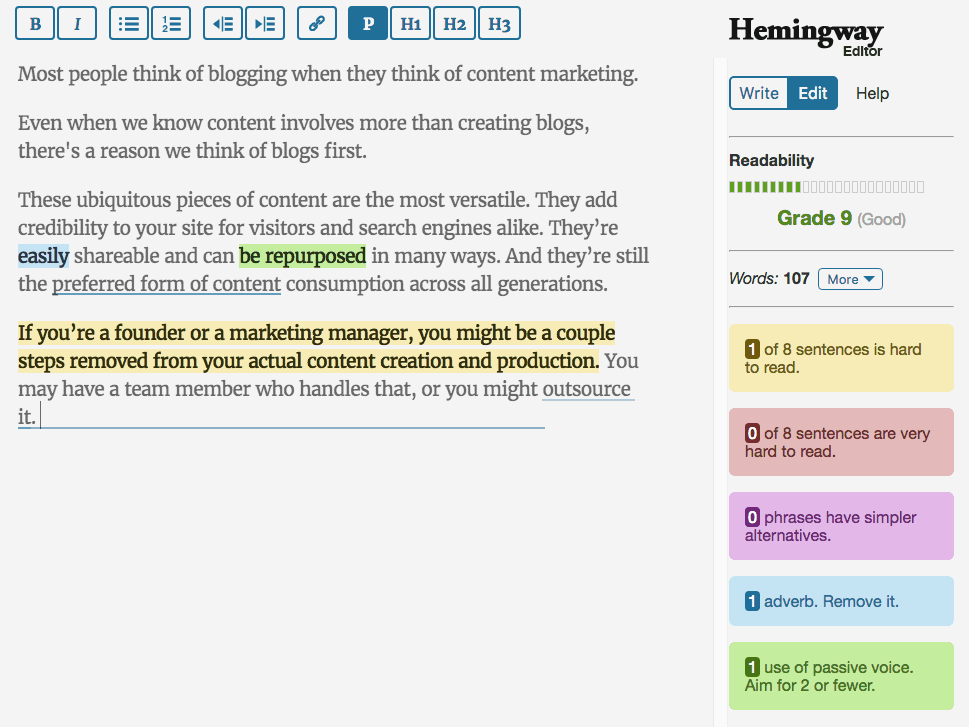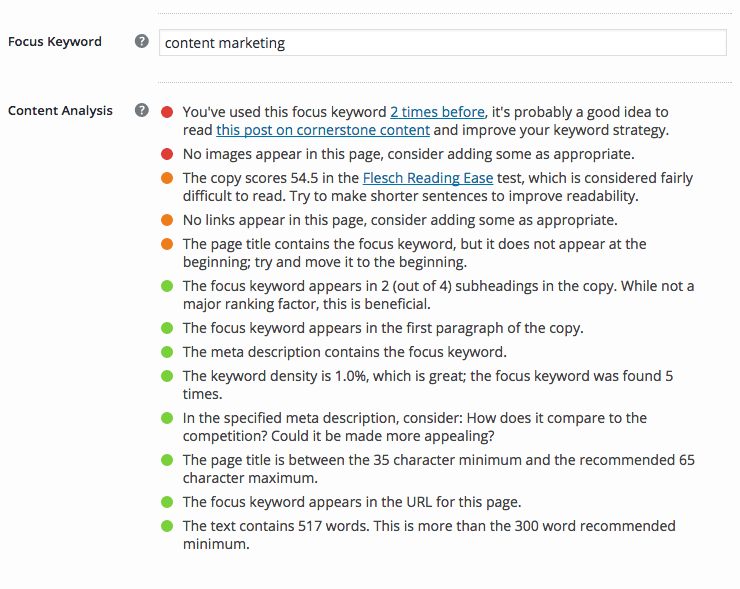Most people think of blogging when they think of content marketing. Even when we know content involves more than creating blogs, there’s a reason we think of blogs first.
These ubiquitous pieces of content are the most versatile. They add credibility to your site for visitors and search engines alike. They’re easily shareable and can be repurposed in many ways. And they’re still the preferred form of content consumption across all generations.
If you’re a founder or a marketing manager, you might be a couple steps removed from your actual content creation and production. You may have a team member who handles that, or you might outsource it.
Either way, understanding the basic elements your blogs need for success can help you grade the building blocks of your content effort.
What Does “Effective” Mean for Blog Posts?
As our founder Brian Casel puts it in our email course, “Content Marketing on Autopilot,” an effective blog post is one that converts.
That’s always the goal and always should be.
But if we dig deeper, what exactly does that mean? What is a “conversion” for you? What role does the blog post serve in your overall strategy?
It’s important to establish your strategy before you start pumping out blog posts or hiring anyone else to create them for you. What you’re trying to do will affect what you create.
One of the most effective ways to ensure your content always serves your greater marketing or sales purpose is to map your blog posts to different levels of the marketing and sales funnel. This means you’re always writing about topics your prospects and leads want to solve at each stage.
You can also map articles to specific lead-gen offers like guides, eBooks, or webinars. The idea here is that your lead magnet should represent a major marketing message for your product, and tying blog posts to that message lets you create more content in support of that topic.
At Audience Ops, we aim to provide informative content for founders and marketing managers while building our subscriber base. We do that by writing great blog posts.
Whatever your specific goal for your content, keep that in mind as the “conversion event” or end goal. That will come into play as you build each piece of your ideal blog post.

Elements of an Effective Blog Post
1. The Idea
Creating great content is all about creativity. Unique ideas stand out way more than writing straight from a keyword list.
In order to be effective, content needs to be a vehicle for connecting the right audience to the messages you’re trying to convey about your product or company. But people don’t want to read generic marketing messages or sales copy – they want to learn new things, to expand their understanding of a topic, see what other people are successfully creating, or develop a new way of looking at something familiar.
Or, as content creator and NextView marketer Jay Acunzo puts it, “Find a unique angle on the broad, basic stuff, and cling to it like a mouse on a stick heading over Niagara Falls.”
As a leader in your company, you can influence this part of the process a lot, even if you’re not directly involved in content creation. That doesn’t mean you have to come up with the ideas, but directing your team or contractors toward the topics you know your ideal customer enjoys will help them focus their energy.
2. The Strategy
Know where the post fits into your content strategy. Go back to the “why” – why are you creating content in the first place? What would an “effective” post do for you?
Are you trying to create authority on certain subjects? Build out cornerstone content to repurpose? Trying to rank for specific long-tail phrases?
The answers to these questions dictate a lot about your post, including your SEO basics, post format, and depth. As a marketing leader on your team, you should know the answer to all of the “why” questions and ensure your content creators understand them too.
3. The Headline
You might be thinking, “Isn’t the headline part of the writing?” And yes, that’s true, you do need to write your headline. But the strategies and skills involved with crafting effective headlines are totally different than what it takes to write a solid article.
It’s crowded in the content field today. Nearly 90% of marketers create content to support marketing and sales efforts. Forty-two percent of digital marketers create new content daily. Headlines are your best bet to get someone to read your article instead of someone else’s.
So with all that in mind, they get their own step in the process.
Headlines should accomplish three things:
- Appeal to browsing potential reader’s emotion to pique their interest
- Tell the reader what the article is about
- Positively affect your search engine optimization
Appealing to emotion is the hidden ingredient that gets us to click one post over another. For instance, some headlines use statements of fact designed to get us to intuitively agree or disagree – and then we get interested in what the article says to either back up our own opinion or challenge it.
CoSchedule’s Headline Analyzer is a great tool to help you assess whether you’re using the right kinds of words, how long your headline should be, and what it will look like in various formats, including search results and email subject lines.

CoSchedule’s tool helps you add the right mix of words to your headline to appeal to readers’ emotions and convince them to click.
4. The Research
Every post requires research. Even if it’s a post where you’re waxing philosophical about 100% your own ideas from your own mind, it would be stronger with research.
A few ways you can bolster your posts through research: statistics, brief histories of the concepts you’re talking about, quotes from experts on the topic, scientific studies, graphs and charts, and more.
Think of your post like building an argument – your original ideas make up the bulk of the post, but supplementing them with “social proof” from research makes your argument more compelling.
There will also be times when you’re writing on subjects you’re not intimately familiar with – in these cases, research will help you form your argument and supporting points.
It’s a good idea to start the research phase of your post well before you sit down to write. Your research could make you tweak your angle or add more to certain parts of the post as you discover more information.
5. The Writing
It’s the nature of our crowded content field that sometimes even good content doesn’t get noticed. But we can promise one thing: bad content is never effective, and the quality of the writing separates a lot of that wheat from the chaff.
Give people a reason to read and a reason to want to connect with your messages through your writing.
Your content creators don’t need to be Nobel laureates in literature. Writing well for the web isn’t like writing well for the Pushcart prize.
A few things your writers should keep in mind for success:
- Use a friendly, human tone: Write like you’re talking to someone
- Tell a story: Use anecdotes and weave the same themes throughout your piece
- Use web-friendly structure: Things like sub-headings, numbers, bullets, dashes, short paragraphs, and strategic bolding help your reader navigate
Most people skim while reading on the internet. Get straight to your point and make everything visually easy on the eyes to help keep attention where you want it on the page.
If you struggle with keeping sentences short or throwing in too many -ly adverbs, there’s an app for that (because of course there is!).
The Hemingway editor and similar tools parses your writing and lets you know where you’ve gotten long-winded or too passive in voice.

6. The Editing
Spelling matters and grammar counts! There’s always a balance between getting the post out (especially if it’s about something timely) and spending time on the editing process, but when your content represents your company, typos and obvious grammatical errors make a statement about your level of attention to detail.
Spelling may seem like it matters less because it’s easier to correct on the Internet than in the era of the printed word, but it’s still a signal of the level of care you took in creating the piece.
Of course, mistakes do happen, and in those cases it’s great that we can just fix something and re-publish it. But putting an editing process in place lessens the chances of a stray typo making it through.
Writing should always be edited by someone not-the-writer. Ideally, you’d have a professional editor looking everything over with a fine-tooth comb and a style guide (like we do at Audience Ops!), but if that’s just not reality for your team, at the very least have someone with solid writing chops who didn’t write the piece take a look.
7. The Visuals
We know – there’s a stock photo epidemic in content marketing these days. While we can’t stand behind that remedy, the cause is just – people like pictures. It’s as simple as that.
Images give readers’ eyes a break from walls of text, and our brains like the color and visual interest images and graphics offer. That said, you don’t have to add to the “person at desk” stock image race to provide visuals for your readers.
The most important thing is to choose appropriate visuals. Unless it’s the tone of your company blog, being too cute or stretching the interpretation of an image isn’t recommended.
You can also create your own graphics on free tools like Canva or Sketch (the graphic in this post was made with Canva).
8. The Finishing Touches
Once you’ve finished writing and (judiciously) bedazzling your post with images, you still need to complete a few final elements before you’re ready to hit publish.
If you use a WordPress blog, it should come with the Yoast SEO plugin. We’d highly recommend downloading it if you don’t already have it. This powerful plugin helps you align your SEO basics before publishing. It will prompt you to enter meta descriptions and meta titles, and grade your post’s SEO level with recommendations.

You’ll also need to post your post. Every blog content management system has a different way of doing this, but you’ll need to make sure you check things like fonts, header styles, image sizes, and whether any plugins like “Click to Tweet” work correctly in your preview draft.
9. The Promotion
Ah, we could spend a whole post on this (and we just might in the future, keep an eye out!). If a post publishes in the forest and no one reads it, did it make a sound?
There’s a whole second half to measuring the “effectiveness” of your post, and that’s how well you promote it. Your post is unlikely to meet your “effectiveness” goals without traffic to convert into subscribers, which isn’t possible without real, live people reading it on your site.
How you promote your content will depend a lot on your content goals and what type of post you’ve written. For instance, if you’ve written a highly technical post for practitioners, it makes sense to seek out a forum or community where your audience discusses their issues and provide your link as a possible solution.
Here are a few ways you can promote your posts (some of which we use too!):
- Your own social channels
- Your own newsletter to your list
- Use @ mentions on social channels to give any companies or influencers you mentioned the option to share it as well
- Forums like Quora or GrowthHackers
- Niche blogs or newsletters
- Submit to other blogs with an “originally appeared on your blog” attribution
Final Thoughts
A lot goes into creating a “good” blog post. When it comes down to it, despite all the data and experience, we’re all just making educated guesses at what might appeal to our ideal customers on a particular topic.
In the end, the best advice of all when it comes to blogging might be: Create a consistent system, but follow your creative gut.
Because there’s no automated analysis app that can replicate human creativity, and there’s no perfect keyword formula that can generate emotional connection. Systems and rules lay the foundation for an effective blog post, but it’ll be your creativity and the genuineness of your messages that make it work.